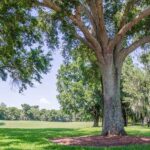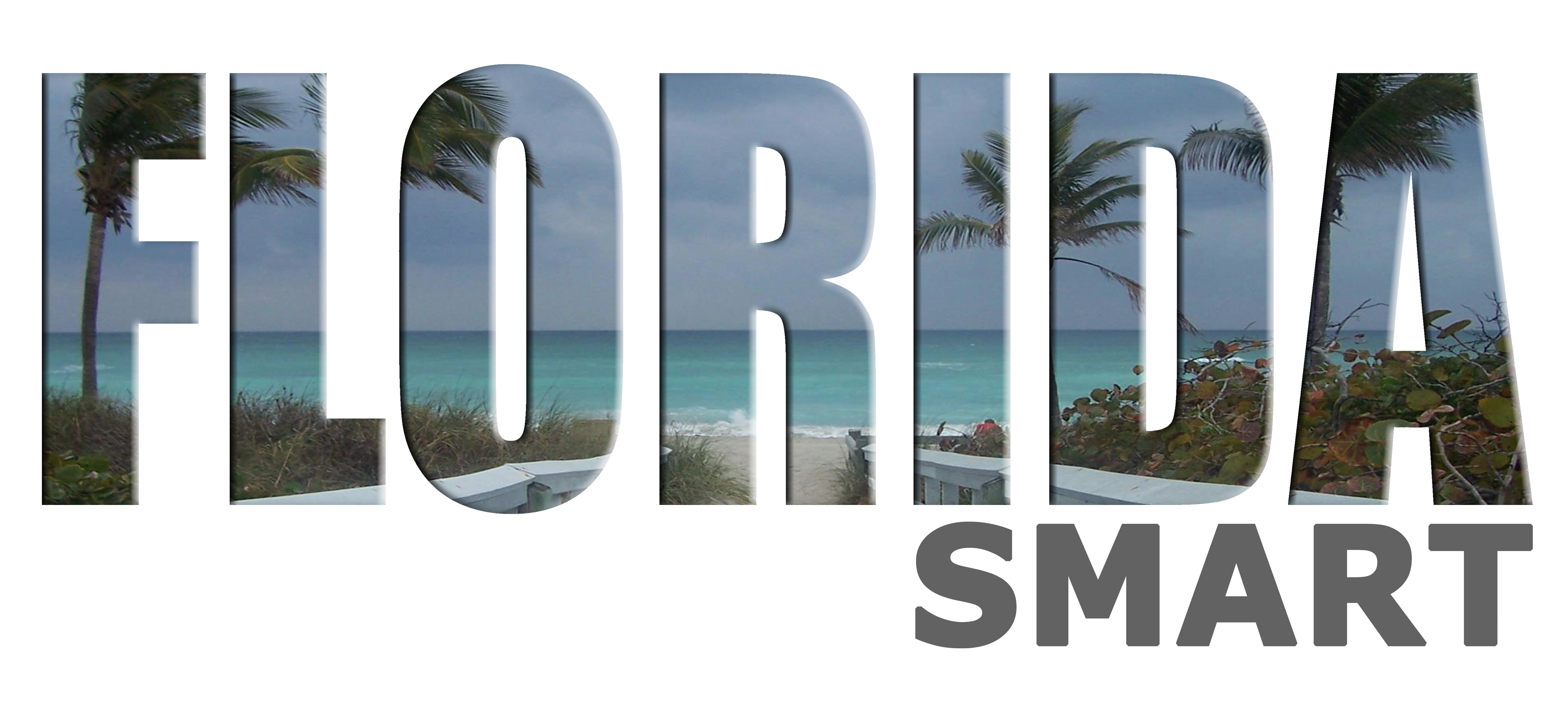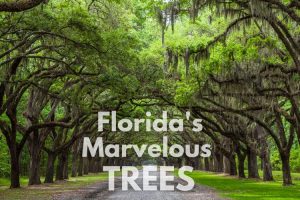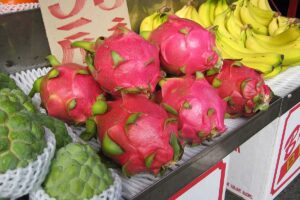Become a fungivore with a brief look at edible mushrooms in Florida
What other hobby allows you to explore nature, get fresh air and exercise, and pick free food off the floor? Mycophagist enjoy all these benefits while becoming well-educated about nature and forming intimate knowledge of their local wilderness. Of the 10,000 known types of mushrooms, about 270 can be found right here in Florida! Here is your quick introduction to a few tasty edible mushrooms you can easily identify in the Sunshine state.
Here are some brief guidelines when identifying a mushroom:
- Season – The time of year you can find them.
- Cap – Top part of the stalk. Look for width, shape, and color.
- Underside of Cap – Look for pores, spines/teeth, gill-like ridges, and tubes.
- Stem (stipe) – On which the cap sits. Look for strips, striations, rings, and protrusions.
WARNING – DO NOT EAT ANYTHING YOU CANNOT 100% IDENTIFY – CONSULT WITH LOCAL EXPERTS BEFORE CONSUMING ANYTHING I MENTION. THIS GUIDE IS MEANT TO BE A CURSORY GLANCE AT EDIBLE FLORIDA MUSHROOMS. NEVER EAT A MUSHROOM YOU IDENTIFY SOLELY FROM ONLINE PICTURES. COOK ALL WILD MUSHROOMS THOROUGHLY.
King Bolete (Boletus Edulis)
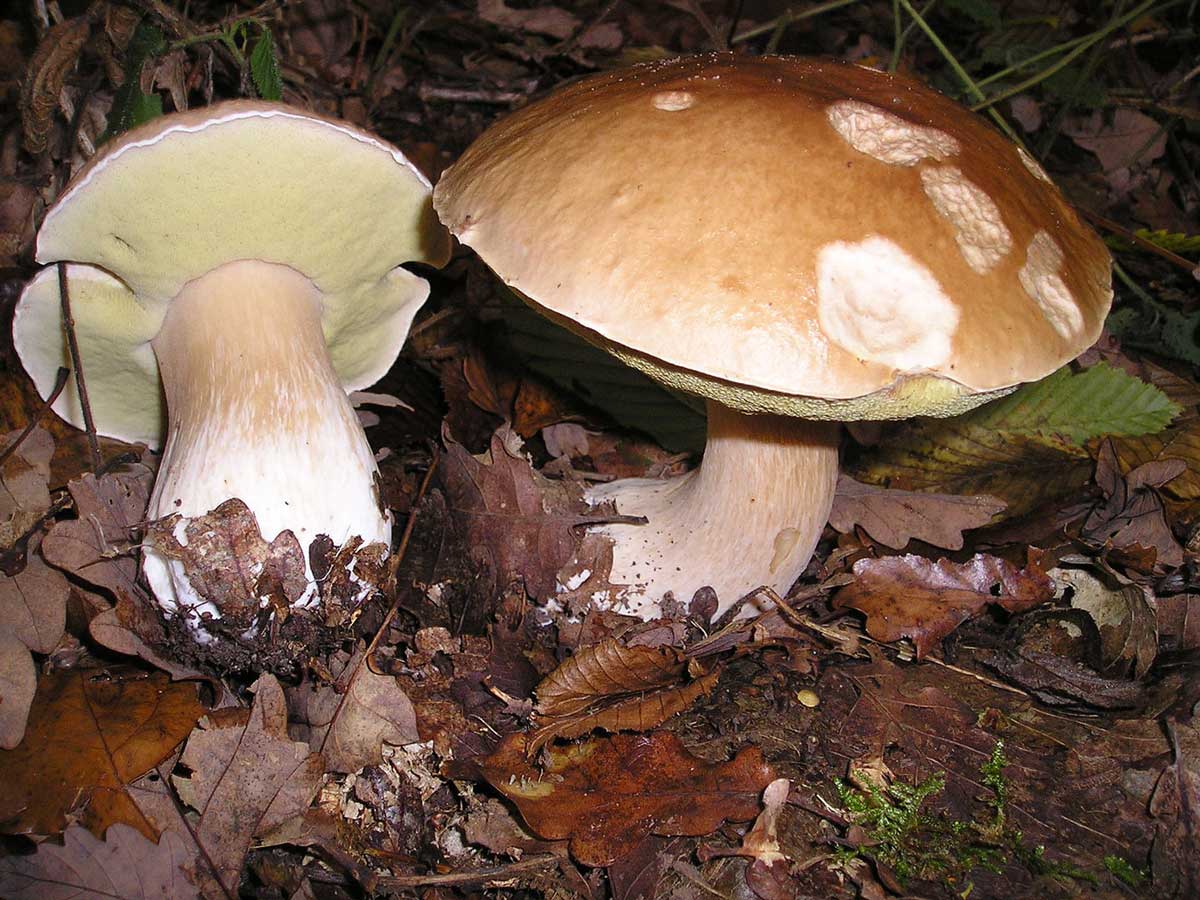
The most famous culinary mushroom, the bolete is also known as the porcini mushroom or the Penny Bun. This type of bolete grows in hardwood forests near spruce or hemlock, and particularly on Oakwood. They are dense-fleshed with no gills and a sponge-like undercap.
However, while there are a variety of boletes found in Florida such as the soapy tasting Ruby Bolete (Hortiboletus rubellus) and the citrus-like Butyriboletus Floridanus, the king is much easier to identify for a newbie.
Note that there is dispute as to whether the King can be found in Florida, though many local Floridians and bloggers, including The Bolete Filter website have identified them in the Florida region.
Cap and Underside – Convex. The underside is densely porous.
Stem – Club shaped with a net-shaped pattern. Colored from white to reddish brown.
Season – Between August and October.
Toxic Look-Alikes – While many boletes are edible, only a few are recognized as toxic. These can lead to digestive issues if eaten. Inedible boletes have bright red, deep orange, or red pores, and bleed blue when bruised or cut. There is an exception to this rule – the bicolor bolete, but it’s best to chuck it to be safe.
Taste and Consistency – Meaty, crunchy with a nutty flavor, and creamy when cooked. It is highly recommended to dry the cap as it concentrates the flavor and removes the slightly bitter taste.
Cooking Suggestion – One of the few mushrooms that can be safely eaten raw! However, be wary of bugs. Slice the mushrooms and add them as a topping from salads to pizza and pasta. The slices can also be dried out and later added to a dish to unleash a rich savory flavor.
Chanterelles (Cantharellus cibarius)
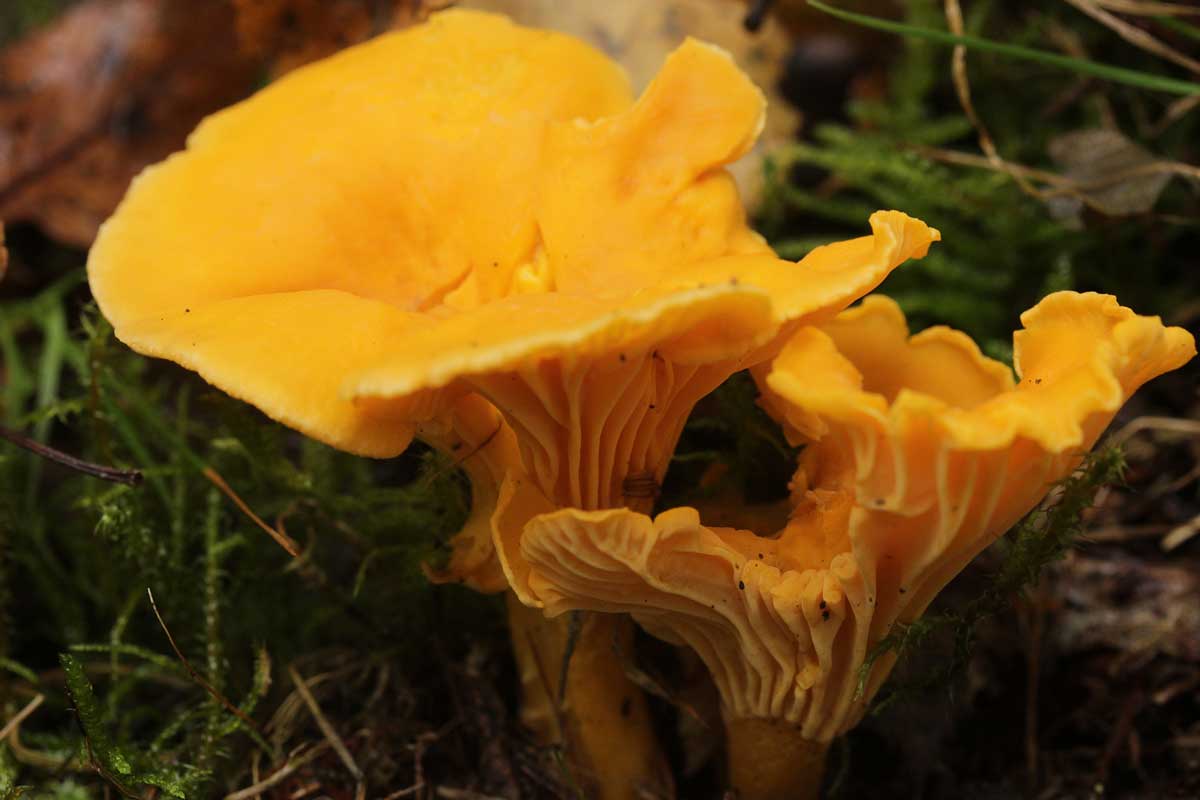
Once exclusively eaten by French nobility before becoming common in most kitchens in Europe, chanterelles, also known as the “Golden Chanterelles,” are the most well known wild mushroom and one of the easiest to identify – if not by their funnel-shaped cap then by their fruity perfumed scent. They grow in hardwood forests in damp areas – look for areas covered in moss.
Another type to look after in Florida is the Cinnabar Chanterelles (Cantharellus cinnabarinus), these are colored deep red and are just as edible and tasty as its golden sibling!
Cap and Underside – Irregularly convex and funnel shaped. The cap is yellow-white, but can become white the longer it remains in the sun. There are “false gills,” or forked ridges, that run down the stem which are the same color as the cap.
Stem – Nothing notable about the stem. Similar color to the cap.
Season – From July to early fall. Look for them a couple of days after rainfall, especially on hot humid days.
Toxic Look-Alike – The Jack-O-Lantern mushroom (Omphalotus olearius.) These are colored deep orange, have gills, and grow in dense bunches – actual chantelles rarely grow in dense bunches. To be safe, avoid what may appear to be a chanterelle if it grows on dead logs.
Taste and Consistency – Meaty and Chewy. This mushroom has a mild peppery taste and is not recommended to be eaten raw.
Cooking Suggestion – Their rich flavor is released when cooked. Melt butter on medium heat. When it foams, add sliced portions of chanterelles and cook until all the liquid is gone.
Chicken of the Woods (Laetiporus sulphureus)

The reason for this mushroom’s name becomes evident once you eat it – it tastes like chicken! And a vague lemon flavor. Also known as the sulphur shelf fungus, Chicken of the Woods is the perfect mushroom for inexperienced mushroom hunters as there is not anything else you could mistake it for. These grow above ground on dead or dying hardwood forest trees, forming overlapping “shelves.” Avoid Chicken of the Woods growing on eucalyptus or cedar trees! These specimens can cause gastric distress when ingested. The most common Florida variety of Chicken of the Woods, Laetiporus gilbertsonii var. pallidus, primarily grows on Live Oaks in Florida, typically dead or dying Live Oaks.
Cap and Underside – Smooth or wrinkled fan-shaped caps that grow in brackets or “shelves.” The underside of the cap ranges from a light pinkish orange to white-yellow pores – no gills.
Stem – No visible stem.
Season – From August to early winter.
Toxic Look-Alike – None.
Taste and Consistency – Vague chicken and lemon taste. The young portions of the cap have a thick, tender texture while the older sections near the center of the cap are tough and generally thrown out or not harvested.
Cooking Suggestion – Cut around the edges of the cap. These portions have been noted to have thick watery flesh and can be prepared similarly to chicken. Slice these portions into strips, coat them in egg, seasonings, and flour, then fry them in vegetable oil to create some Chicken Nuggets of the Woods!
Indigo Milk-Caps (Lactarius Indigo)
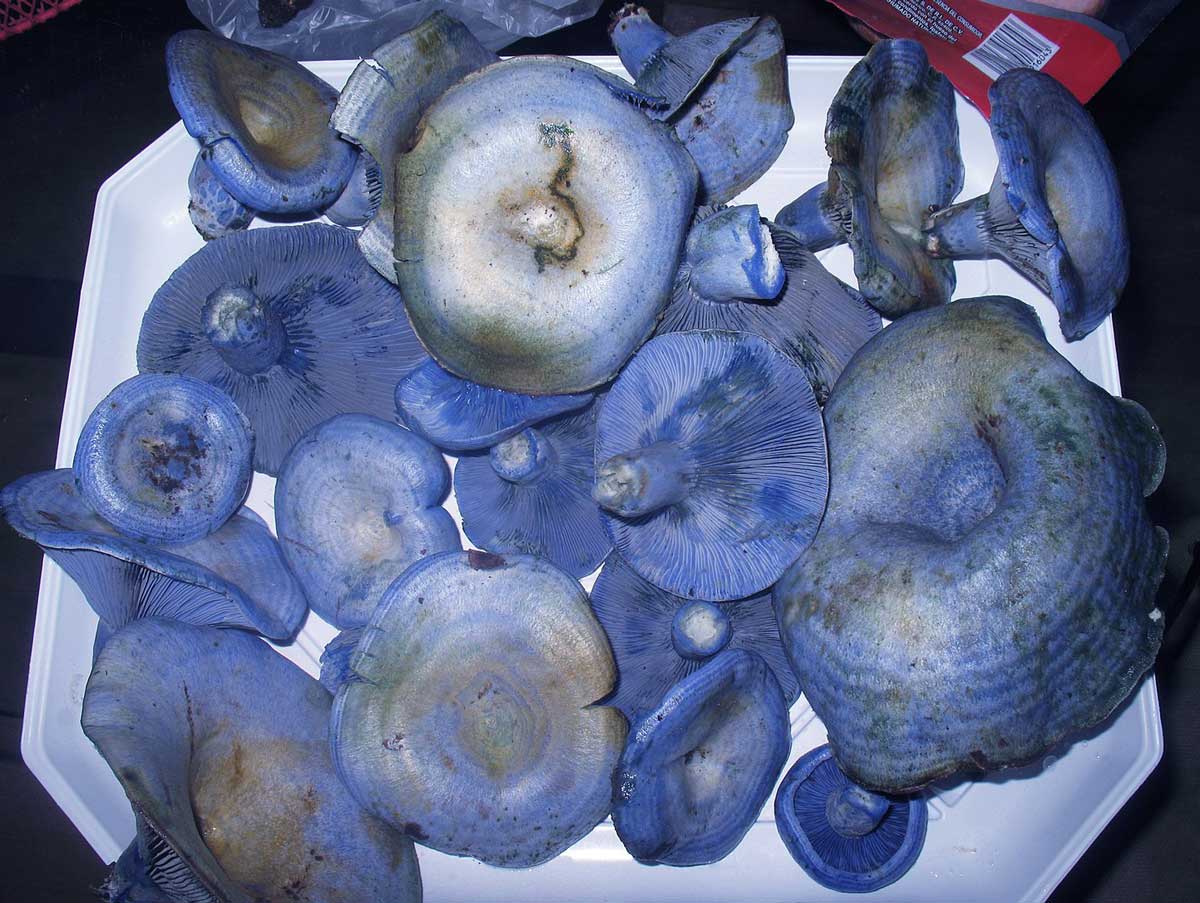
The remarkable blue mushroom straight from a Lewis Carroll fantasy novel, the Indigo Milk-cap grows in forests of oak or pine trees and can grow together or alone. However, they are also commonly found in recently drained floodplains. Famously, when cut, it bleeds a deep blue “milk,” with its flesh becoming darker blue before turning green the longer it is exposed to air.
Cap and Underside – Convex with a central depression (the mushroom sinks in a bit at the center) creating a vase-like appearance. Its margins are rolled in, unraveling as it ages. The underside has pale blue gills that connect to the stem.
Stem – The stem is hard and hollow, that is sometimes off-centered.
Season – Mid to late August to November.
Toxic Look-Alike – None! Very difficult to mistake this deep blue mushroom for anything else. This is a safe mushroom for newbies to hunt.
Taste and Consistency – The mushroom has a mild peppery, sweet, and nutty flavor. The soil and type of tree it grows on can affect its peppery taste. The cap is crunchy – is not recommended to dry the cap as it will develop a grainy texture.
Cooking Suggestion – A fun meal to make for children are green eggs! When cooked with scrambled eggs, the milk from the mushroom dyes the eggs green. The mushroom itself will become a pale grey color. While the indigo milk-cap is typically not cooked by itself, you could dip it in egg and batter it in flour, then fry them in oil for crispy, peppery mushrooms.
Common Puffball (Lycoperdon Perlatum)
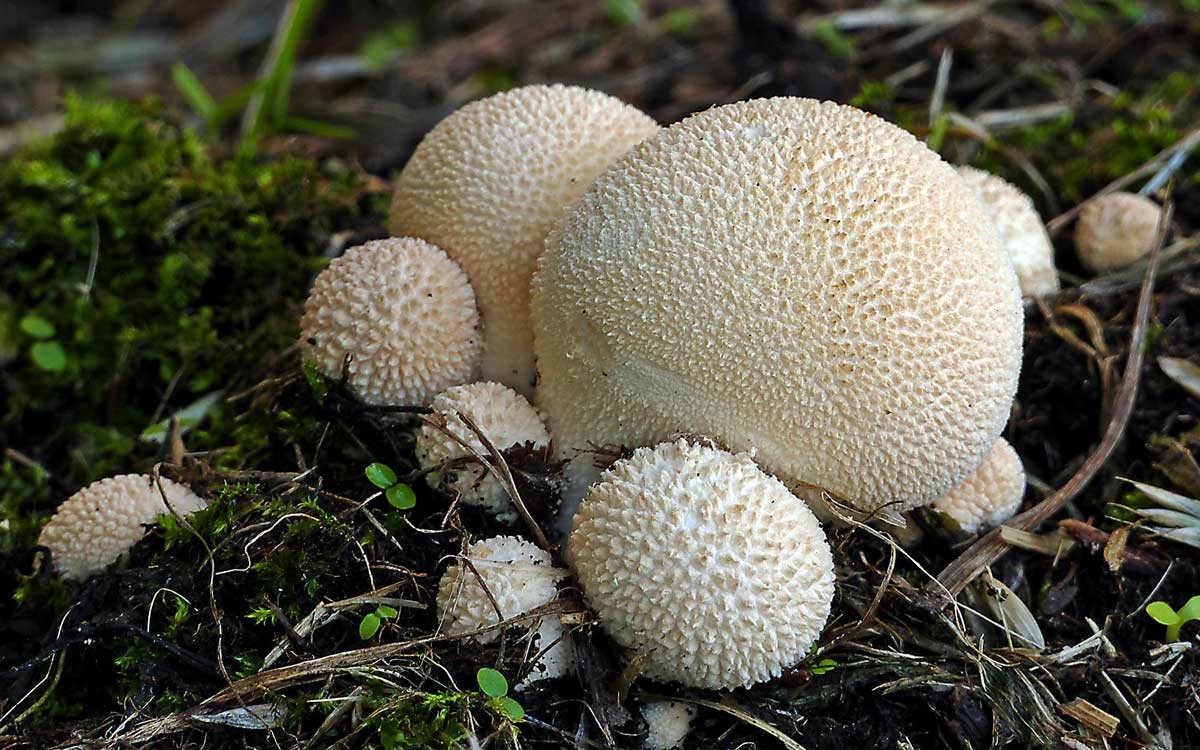
Interestingly referred to as “The Devil’s Snuff-box,” these spherical mushrooms are often found in fair rings – circular patterns on the ground composed of mushrooms that, depending on the culture, are viewed as a sign of good luck or a bad omen. Typically, the common puffball mushrooms are found everywhere in woodlands and grasslands of all types between groups of 3 to 10.
Coming across them, you may have the urge to kick these golf ball to soccer ball sized mushrooms across the field, but I advise you against playing with your food – especially free food found on the ground!
Cap and Underside – Young Puffballs are white, round ball-like cap speckled with warts or spines in the shape of cones with dense flesh. Older Puffballs are colored yellowish to brown and have spores inside. A unique feature of the mushroom is that there is no underside – no gills or pores to inspect!
Stem – No stem.
Season – While restricted to growing from summer to early winter, due to Florida’s year-long summer climate these mushrooms can be found year-round!
Toxic Look-Alike – IMPORTANT. Puffballs are easily mistaken for the young version of the lethal death cap mushroom. Always cut a puffball vertically or lengthwise – if there is a mushroom imprint on the inside, toss it – that is a death cap.
Taste and Consistency – Puffballs are known to absorb the flavor of what is around them, and thus typically have an earthy and nutty taste. The flesh of a harvested puffball has been described as “marshmallow soft.” Puffballs are only edible when they are young.
Cooking Suggestion – These are an incredibly versatile mushroom. As previously mentioned, Puffballs absorb the taste of what is around them like tofu, and thus, can work in a variety of dishes from pizza and pasta to omelets! In fact, cooks commonly refer to puffballs as the “Breakfast Mushroom.” Remove the outer skin and slice into vertical portions, then add them to any meal. Be sure to throw out any discolored slices as these likely have bits of mature spores in them and could throw off the taste of the dish.


